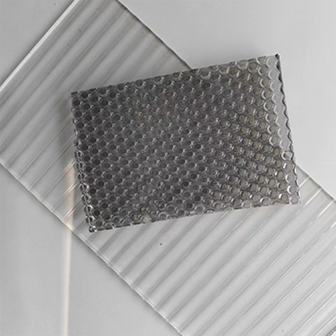Dec . 12, 2024 10:17 Back to list
what is ag glass
Understanding AG Glass A Comprehensive Overview
AG glass, short for Anti-Glare glass, is an innovative material that is increasingly gaining popularity in various industries due to its unique properties and functionalities. The primary characteristic of AG glass is its ability to reduce glare from light sources, making it an ideal choice for applications where visual clarity and comfort are essential. This article aims to provide an in-depth understanding of AG glass, its manufacturing process, applications, advantages, and limitations.
Manufacturing Process of AG Glass
The production of AG glass involves a meticulous process that enhances the surface properties of traditional glass. The primary method of achieving the anti-glare effect is through the application of a special coating or by etching the surface. The coating typically consists of microscopic structures that scatter light, thereby diffusing it and reducing reflections. This process is usually executed in controlled settings to ensure a uniform coating that does not affect the inherent clarity of the glass.
Another method involves chemical treatments that modify the glass's surface at a microscopic level. This etching process creates a texture on the glass that diffuses light more effectively, further minimizing glare. Regardless of the method used, the end product retains the transparency expected from glass while significantly enhancing visual comfort in brightly lit environments.
Applications of AG Glass
AG glass has a wide range of applications, making it a versatile material in various sectors
1. Consumer Electronics One of the most common applications of AG glass is in the screens of devices such as smartphones, tablets, and laptops. The anti-glare properties help reduce the strain on users' eyes, particularly in brightly lit environments, improving the overall user experience.
2. Automotive Industry In automobiles, AG glass is used in windshields and dashboard displays. It enhances visibility for drivers and passengers by minimizing reflections from sunlight and headlights, contributing to safer driving conditions.
3. Architectural and Interior Design AG glass is increasingly being used in office buildings and homes to reduce glare from windows and glass walls. It helps create a more comfortable living and working environment by providing better visual clarity without harsh reflections.
4. Public Information Displays For outdoor digital signage and advertising displays, AG glass ensures that content remains visible even under direct sunlight. This quality makes it a valuable material for information kiosks, public transport displays, and billboards.
5. Medical Equipment In medical settings, AG glass is employed in various devices and equipment, providing clear visibility for both professionals and patients while reducing glare to enhance readability and accuracy in diagnostics.
what is ag glass

Advantages of AG Glass
The use of AG glass comes with numerous benefits
- Enhanced Visual Comfort By minimizing glare, AG glass significantly reduces eye strain and discomfort, which is particularly beneficial for prolonged exposure in work environments or outdoor applications.
- Improved Display Quality It enhances the quality of images and content displayed on screens, ensuring that colors remain vivid and legible without annoying reflections.
- Durability Many types of AG glass are designed to be scratch-resistant and are treated to withstand environmental factors, making them a long-lasting choice for various applications.
- Versatility With its broad range of applications across different industries, AG glass can be tailored to meet specific needs, whether in consumer electronics or architectural design.
Limitations of AG Glass
While AG glass offers several advantages, it also has some limitations
- Cost The manufacturing process for AG glass can be more expensive compared to standard glass, which may deter some manufacturers from adopting it universally.
- Maintenance Depending on the coating used, AG glass may require specific cleaning methods to maintain its properties. Some coatings can be sensitive to certain cleaning agents, which could degrade their effectiveness over time.
- Potential for Haze Depending on the level of anti-glare treatment, some AG glass can exhibit a slight haze effect, which may not be suitable for applications requiring crystal-clear visibility.
In conclusion, AG glass is a remarkable material that addresses the common issue of glare across various applications while enhancing visual comfort and clarity. As technology continues to advance, and with increasing awareness of the importance of user comfort, the demand for AG glass is poised to grow across multiple sectors. Whether it's in everyday consumer devices or specialized equipment, AG glass has established itself as a critical component of modern design and functionality.
-
Safety and Style with Premium Laminated Glass Solutions
NewsJun.24,2025
-
Reinvents Security with Premium Wired Glass
NewsJun.24,2025
-
Premium Float Glass Line for Modern Architecture
NewsJun.24,2025
-
Low Emissivity Glass for Energy-Efficient Architecture
NewsJun.24,2025
-
High-Performance Insulated Glass Solutions for Modern Architecture
NewsJun.24,2025
-
Elevates Interior Style with Premium Silver Mirror
NewsJun.24,2025
Related PRODUCTS














